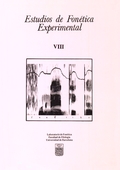El mecanismo de producción de la vibrante apical múltiple
Abstract
The articulation of the apical trill has not been convincingly described in any traditional phonetics manual. It is often explained by means of the elasticity of the tongue tip or by its stiffness or simply by the pass of the airflow. None of these explanations is satisfactory. The Bernoulli principle - which establishes the faster the air moves, the lower the pressure is-, serves as an explanation of the backward and forward movement of the tongue tip. The tip raises and makes contact with the alveolar ridge, pressing it slight1y. The opposite pressure of the espirated air flow will progressively increase until it overcomes the tongue tip resistance. The tip will end up separating from the alveolar ridge leaving a narrow opening, through which it slides at great speed. This causes a drop of the pressure and a sort of vacuum that forces the tongue tip to raise once again, thus ending the cycle. This happens at least two or three times.
Downloads
Published
How to Cite
Issue
Section
License

This work is licensed under a Creative Commons Attribution-NonCommercial-NoDerivatives 4.0 International License.
All articles published online by Estudios de Fonética Experimental are licensed under Creative Commons Attribution-NonCommercial-NoDerivs 4.0 International (CC BY-NC-ND 4.0 DEED), unless otherwise noted. Estudios de Fonética Experimental is an open access journal. Estudios de Fonética Experimental is hosted by RCUB (Revistes Científiques de la Universitat de Barcelona), powered by Open Journal Systems (OJS) software. The copyright is not transferred to the journal: authors hold the copyright and publishing rights without restrictions. The author is free to use and distribute pre and post-prints versions of his/her article. However, preprint versions are regarded as a work-in-progress version used as internal communication with the authors, and we prefer to share postprint versions.




